- Home
- Jonathan Maberry
Dogs of War Page 7
Dogs of War Read online
Page 7
“I need you to be really sure about this, Sean.”
“I am sure. Only thing in her stomach was a partially digested McDonald’s Filet-O-Fish and some ginger ale. She spit out the, um, stuff she bit off the two men.”
“Thank God,” I breathed. Ghost was looking at me now, tense because I was tense. Maybe scared because I was scared. “Who killed the girl?”
“I’ll get to that, but let me tell the rest of it first,” said Sean. “When the uniforms entered the room, they found her dead. She was naked and her eyes were open. Wide open. So was her mouth. It was like she died screaming.”
“Did the super manage to—?”
He cut me off. “No. She just collapsed and died.”
“From what?”
Instead of answering, he said, “When I reconstructed the scene, I realized that the john she’d killed hadn’t been her customer. This guy had been in the room next door with another girl. That girl said her john was pissed by all the screaming they heard coming through the wall, so he went next door to tell her to shut up, and that’s when she attacked him. One of my forensics guys found a cell phone and determined that Kya had been in the middle of making a call when she freaked out. She was estranged from her family and they live out of town, so I’ve got a phone interview set up with them.”
It was a sad story and, except for the biting part, all too common. The number of teenage runaways is staggering, far more than most people think. Every year more than a million and a half kids run away. Most return home or are found, but hundreds of thousands vanish. In dysfunctional families, particularly where abuse is a factor, the majority of the kids who run away are girls. Eighty percent of homeless girls have been physically or sexually abused. Some of those kids are never found. Of those, a bunch grow up to be fringe dwellers—junkies, squatters, and the like. Others are pulled into different kinds of human trafficking under false identities, and a lot of the time it’s forced sex work. It’s appalling, and the problem is accelerating rather than slowing down. Because so many teens run from bad homes, there isn’t always a lot of family push to find them. And some kids will do anything to keep from being found. This girl, Kya—or Holly—was probably one of those statistics, and Sean and I both knew that the system wouldn’t burn up a lot of calories seeking justice for her. It was a national embarrassment, and it was a tragedy. A life erased and all its potential extinguished. Just like that.
“She was such a little thing, Joe,” said Sean, and I could hear more of the father than the cop in his tone. “Nowhere near a hundred pounds. Skinny, with red hair and freckles. She’d have grown up to be beautiful, but even if she was short, fat, and ugly it comes to the same thing. Someone did this to her.”
“Did what, Sean? You still haven’t told me how she died.”
“Yeah, well, that’s the thing. There was no obvious cause of death. No wounds of any kind except some scratch marks from the big man and the broken arm from the super’s bat. No track marks, and, like I said, no drugs in her system. Not even a beer. I got the ME to put some topspin on the autopsy.”
“Who’s the ME these days? Is it still Dr. Jakobs?”
“Yeah. Old fart is a pain in the ass, but he’s the best medical examiner in the city.” Sean lowered his voice to a secretive, confidential level. “He said there were two causes of death.”
“I don’t understand.”
“Joe, she was in the advanced stages of rabies infection.”
“Rabies? That doesn’t make sense. You said she was turning tricks and calling her mother on the phone right before the incident. How could she do that if she was that badly infected with rabies?”
“Yeah, well, that’s where this gets weirder. We released some of the case details to the press, and even the rabies got only two seconds of coverage: ‘Teenage prostitute with rabies bites two other people, and all three die in violent struggle.’ You didn’t see that on the news?”
“No.” Which was, I admit, a little odd, and I thought about the stack of reports on my desk that I’d only halfway waded through. It might be buried in all that backlog. On the other hand, it couldn’t have been too grave a case—three corpses notwithstanding—because there was no call-to-action from Homeland or the CDC. I’d have Lydia Rose do a background check from our end.
“Not surprising,” said Sean. “The girl didn’t matter, the john was a no one, the super was a loser, and the whole thing was tawdry but not sexy, even with all the sexual components. Reporters have gotten jaded. This is too close to other cases scattered around the country, so they can’t sell the novelty. There’s no hook, and they think the other incidents are coincidental. I mean, hell, if they thought there was a conspiracy, then maybe it would get some buzz. But no one thinks that.”
“Do you?”
“Yeah,” he said cautiously. “Maybe.”
“Wait, before we go there, you said there were two causes of death. What else are we talking about?”
“It’s something Doc Jakobs found when he did a full examination of the damaged brain tissue.”
“What did he find?”
“Robots,” said Sean.
I almost smiled. “Say what, now…?”
“Those little tiny ones? You know what I mean. The kind you can only see with a microscope.”
“Nanobots?” I ventured, and I could feel the hairs on the back of my neck twitch.
“Yes. Those are tiny robots, right?”
“They are,” I said, keeping my voice neutral.
“Joe, somebody put nanobots in that girl’s brain.”
CHAPTER FIFTEEN
JOHN THE REVELATOR
WASHINGTON ETHICAL SOCIETY
7750 SIXTEENTH STREET, NORTHWEST
WASHINGTON, D.C.
SIX WEEKS AGO
“The robots are coming! The robots are coming!”
The cries, amplified by the speakers, filled the room and bounced off the walls and collided in the air all around the five hundred people in the seats. No one shot to his feet in panic and tried to flee. No one screamed or fainted dead away.
Instead there was a ripple of polite laughter from some, smiles from everyone else. The tall man on the podium smiled back.
“Or,” he said after a pause, “I should say that they’re already here.”
He turned and spread his arms wide, as if in worship of the images that came and went on the big screen. Machines of every kind, from surgical robots to mechanized drilling platforms to autonomous drones to humanoid figures made from metal and plastic.
“All hail our robot overlords!” cried the man.
More laughter this time, but still not everyone. Not everyone appreciated the jokes or the speaker’s sense of humor. Not everyone knew where this was going. A few of those who did wore the tolerant expressions of people waiting to hear what they already knew. It was a mixed bag, as the audiences of most lectures at the Ethical Society were. Some were the choir here to be preached to, and some were accompanying friends. Some were there because they were curious but not deeply informed on the subject matter; others were there because this was their field and the man who called himself John the Revelator was becoming a voice crying in the technological wilderness—maybe more John the Baptist than the John who wrote the Book of Revelation. Quirky, eccentric, and strange either way. Occasionally offensive but never boring. And his oddball charisma had filled the rest of the seats at the auditorium.
John turned and lowered his arms.
“The technological singularity is regarded as a hypothetical event. One in which, artificially intelligent machines will become so sophisticated that they will make humanity redundant. This is a process that is already well under way. It began when we built computers and wrote software code that allowed robots and other kinds of machines to design and build other robots. It began when we introduced self-learning software into the mix, so that each generation of robots is able to exceed whatever we designed and become something better. Sometimes this evolution follows
predicted lines, and sometimes it yields unexpected results. Leaps of self-development that drive these interlocked fields of study forward by orders of magnitude. The machines we make are becoming capable of recursive self-improvement; they are progressively redesigning themselves. Because of the autonomy we’ve designed into them, they are now building smarter and more powerful machines. This is not an aberration. This is what we want them to do, because we’re desperate to reap the benefits of radical technologies.”
His eyes—green as summer grass—roved over the crowd, and there was a small smile on his full lips that never quite went away.
“Alarmists warn us of a runaway effect,” he said quietly. “They say that if we continue to allow autonomous development to progress at its current rate the machines will become so powerful that they may achieve the state of self-awareness. The technological singularity will cease to be a theory and become a fact. And then what?”
The picture on the screen changed and a clip from the movie The Terminator appeared. Armies of robots armed with pulse rifles stalked through an apocalyptic landscape, blasting away at the dwindling band of desperate human resistance fighters.
“Well,” said John, “we all know how that scenario plays out.”
A clip from Terminator 2 showed a playground full of kids and parents being caught in the shock wave of superheated gases as a nuclear device turned them to ash and blew their dust away.
The room was very quiet.
“Or do we know?” asked John. “Is the scenario from a hundred science-fiction movies and a thousand science-fiction novels really predictive of what will happen when the inevitable happens and the robots achieve consciousness? Is there no other possibility? Is there no other result at the end of this long and complex equation?”
There was no sound at all.
John the Revelator smiled at them. “What would happen, do you suppose, if instead of losing control of the technological singularity we embraced it, accepted it, guided it, and became part of it? What if our technological growth explosion is not a pathway to humanity becoming irrelevant but instead was an open door to our own leap forward in evolution. Not human evolution. Not machine evolution. But a shared evolution. Imagine it. Seriously … close your eyes and imagine the possibilities. We are living on a planet that we—collectively we—have overpopulated while failing to provide for the needs of so many. We live on a planet we have raped and brutalized to the point where it is suddenly lashing back at us with droughts and super-storms and blizzards and melting polar ice and with diseases born of imbalance. We share a world where our mishandling of the basic tools of civilized survival—clean water, antibiotics, contraception, fuel, food purity—are failing us because we failed them. We are in a world where we are writing both our eviction notice and our epitaph.”
Behind him the picture changed to show a man and a woman and two children. They were whole and appeared healthy and beautiful. The image morphed slowly so that they were Caucasian and then Asian, black and then Latino, Native American, and on and on, until finally they were clearly mixed-race. It held there, showing people who were gorgeous and healthy and vibrant. Except that they weren’t entirely human. The blue eyes of the woman clicked with mechanical precision, and on the big screen there was a cutaway to show what she saw when she looked down at one of her children. There was a clear image of the child in high definition and full color, but it was framed by data readouts that indicated the child’s age, height, weight, temperature, blood pressure, heart rate, glucose levels, hormone balances, body-fat percentage, blood gases, and a dozen other bits of data. A scale indicated emotional health. A small meter suddenly flashed with an alert saying that the child had a bacterial infection that posed a seventy-percent risk factor. The mother flicked her left wrist quickly from side to side and a section of skin folded back to reveal a small but sophisticated control panel. The mother pressed a few touch keys and the display for the child indicated that nanites had been triggered to release a precise amount of antibiotics into the child’s bloodstream.
Beside the woman, the husband’s smile flickered for a moment and he raised his hand and looked at his palm. The view shifted to show the screen display he saw, and three alerts popped up. One said that he was 3.1 pounds overweight and a list of fat-burning exercises appeared and immediately transferred to his personal calendar, and an alarm was set to remind him to go to the gym. The second alert told him that there was an imbalance in his digestive tract, and a hologram displayed an image of a slice of pepperoni pizza with chili powder on it. A frowning emoji flicked on and off, and a display informed him that a small and carefully regulated dose of famotidine, an H2 receptor antagonist, had been released by nanites. The third alert told him that he had a conference call in fifteen minutes and offered the choice of several business folders for him to peruse.
The picture changed to show a teenage girl walking up to her house carrying schoolbooks. The door scanned her, then its locks clicked open. The camera followed her up the stairs and into her bedroom, where a computer turned itself on and arranged her study notes, homework, and other resources in stacked files on a threefold screen.
Then the image was of a young woman at a bar. As she looked around she got immediate displays of each person, showing age, name, criminal record if any, marital status, occupation, and health warnings. One very handsome man was tagged as having a previous arrest for domestic violence. Another warning said that the very cute guy approaching her had HIV. But the third man was an English teacher—single, no kids, a ninety-seven-percent health rating—who owned his own house and a nice car. Details of his politics, credit score, and social-media platform were included. When that man said hello, the young woman smiled.
There was more. A middle-aged woman went shopping and the displays showed her food content, including fat and salt and additives. A driver slept behind the wheel of his car while it drove him home; his blood-alcohol level clearly showed that he was intoxicated. A military doctor doing emergency surgery on a wounded soldier worked along with a small but sophisticated field robot, and the doctor’s display guided him through a difficult chest incision while showing him all crucial data on the patient, and also linked him to a top cardiothoracic surgeon at the Mayo Clinic. A child being bullied in a schoolyard had alerts going out to teachers and school security, which came running. A woman being assaulted in a parking garage had 911 on the phone while the camera in her eyes ran facial-recognition programs on her assailant and one of her fingernails collected DNA; then a panel in the woman’s wrist opened and hit the man with a small but powerful electric sting.
There were many others.
John stood and watched the people in the audience as they watched the screen.
Finally he said, “And this is just a fraction of personal use once we and the machines become a single and harmonious unit. This is a millionth of a percent of the potential for meaningful, productive, uplifting, and inevitable mutual growth. Business, industry, health care, sports, insurance, banking, exploration, farming, manufacturing, investments, development, climate management, education … well, really, is there any area of our lives that could not be improved?”
The screen faded to silver and the house lights came up.
“The technological singularity is coming,” he said. “The question is whether we resist it, fail ourselves in not keeping pace with it, or embrace it so that we are what evolves.”
CHAPTER SIXTEEN
THE PIER
SATURDAY, APRIL 29, 5:28 PM
“Jesus H. T. Oliver Christ,” I yelled, sitting up so fast my bare feet slapped against the concrete floor of the deck. Ghost whined sharply, alarmed at my tone. “Nanobots? You’re sure?”
“That’s what Doc Jakobs said, Joe. They’re really tiny, though,” said Sean. “Doc almost missed them during the post, but you know how thorough he is. He doesn’t miss anything.”
“What was the yield?” I asked.
“The what?”
“
How many nanites? What was the concentration?”
“Um … not many, I guess…?” he said uncertainly. “I don’t have the number. It’ll be in Doc’s lab report. Does the concentration matter?”
“Maybe,” I said. “Did Doc Jakobs actually say that the nanites were the cause of death?”
“In a way, but the actual cause of death was complicated. There was unusual trauma in the motor cortex and brain stem, and that triggered a myocardial infarction.”
“She had a heart attack?”
“Yes.”
“At fourteen?”
“I know,” said Sean. “I don’t understand the medical parts, and maybe I’m telling it wrong. Something about the nanobots damaging key nerves or nerve centers in the brain. Something like that—Doc can explain it. Oh, and here’s another weird thing. Doc’s sure that the rabies caused her erratic behavior, but there wasn’t the right amount of degenerative damage that he expected to find in someone with the behavioral symptoms. It was like the rabies was dormant and suddenly kicked in at some ultrahigh level. I asked him if the nanobots could have done that, maybe amped the rabies up in some way, but he didn’t know. Frankly, I think he’s afraid to even look into it. He’s afraid to ask around about it, and I don’t blame him.”
“Why’s he afraid to ask?”
“Yeah, well, there’s more,” said Sean slowly. “And maybe I called you as much about that as about the robots. Joe, you see … someone’s been following me.”
“You’re sure?”
“Yeah.”
“How sure?”
“Very,” said Sean. “But, whoever it is, they know how to tail like a pro and they’re slippery as fuck. I spotted them twice, including on my way back from Dad’s. I called units for backup both times and we tried to box the car, but they slipped us like they could read our minds. We’d coordinate something, and they were gone. After the first time, we used alternate radio channels in case they had a police scanner, but they still outfoxed us. Black SUVs both times. Couldn’t see the plates.”

 Flesh & Bone
Flesh & Bone The Adventure of the Greenbriar Ghost
The Adventure of the Greenbriar Ghost Whistling Past the Graveyard
Whistling Past the Graveyard Scary Out There
Scary Out There The Wolfman
The Wolfman The King of Plagues
The King of Plagues Doctor Nine
Doctor Nine Fire & Ash
Fire & Ash The Dragon Factory
The Dragon Factory Deadlands: Ghostwalkers
Deadlands: Ghostwalkers Glimpse
Glimpse Mars One
Mars One Benny Imura 03.5: Tooth & Nail
Benny Imura 03.5: Tooth & Nail Bits & Pieces
Bits & Pieces Dust & Decay
Dust & Decay Patient Zero
Patient Zero The Orphan Army
The Orphan Army Ghost Road Blues
Ghost Road Blues Vault of Shadows
Vault of Shadows Dust and Decay
Dust and Decay Rot and Ruin
Rot and Ruin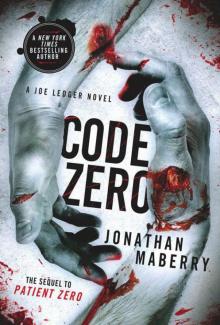 Code Zero
Code Zero Kill Switch
Kill Switch Like Part of the Family
Like Part of the Family Flesh and Bone
Flesh and Bone Bad Moon Rising
Bad Moon Rising V-Wars
V-Wars Dead & Gone
Dead & Gone Fire and Ash
Fire and Ash Hellhole
Hellhole Countdown
Countdown Dogs of War
Dogs of War Pegleg and Paddy Save the World
Pegleg and Paddy Save the World Dead Mans Song
Dead Mans Song Assassin's Code
Assassin's Code Dead of Night
Dead of Night Zombie CSU
Zombie CSU Dark of Night - Flesh and Fire
Dark of Night - Flesh and Fire Aliens: Bug Hunt
Aliens: Bug Hunt Broken Lands
Broken Lands Fall of Night
Fall of Night Ink
Ink Still of Night
Still of Night Relentless
Relentless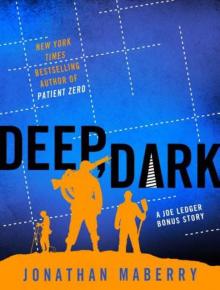 Joe Ledger 1.20 - Story to the Dragon Factory - Deep, Dark (a joe ledger novel)
Joe Ledger 1.20 - Story to the Dragon Factory - Deep, Dark (a joe ledger novel) Property Condemned (pine deep)
Property Condemned (pine deep) The Dragon Factory jl-2
The Dragon Factory jl-2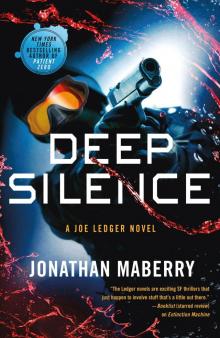 Deep Silence
Deep Silence Joe Ledger
Joe Ledger SNAFU: An Anthology of Military Horror
SNAFU: An Anthology of Military Horror Assassin's code jl-4
Assassin's code jl-4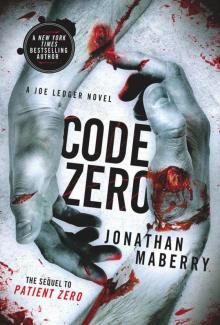 Code Zero: A Joe Ledger Novel
Code Zero: A Joe Ledger Novel Fire & Ash bi-4
Fire & Ash bi-4 Tooth & Nail (benny imura)
Tooth & Nail (benny imura) Dead Man's Song pd-2
Dead Man's Song pd-2 Joe Ledger: Unstoppable
Joe Ledger: Unstoppable The King of Plagues jl-3
The King of Plagues jl-3 The X-Files Origins--Devil's Advocate
The X-Files Origins--Devil's Advocate Limbus, Inc., Book III
Limbus, Inc., Book III Ghost Road Blues pd-1
Ghost Road Blues pd-1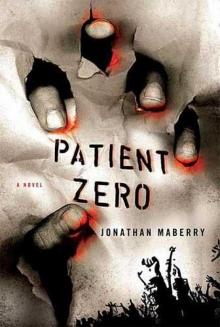 Patient Zero jl-1
Patient Zero jl-1 Death, Be Not Proud
Death, Be Not Proud Countdown: A Joe Ledger Prequel Short Story to Patient Zero (joe ledger)
Countdown: A Joe Ledger Prequel Short Story to Patient Zero (joe ledger) Aliens
Aliens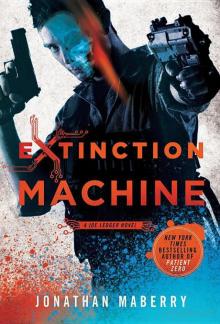 Extinction Machine jl-5
Extinction Machine jl-5 Ghostwalkers
Ghostwalkers Flesh & Bone bi-3
Flesh & Bone bi-3 Joe Ledger 2.10 - Material Witness (a joe ledger novel)
Joe Ledger 2.10 - Material Witness (a joe ledger novel) Nights of the Living Dead
Nights of the Living Dead Dead & Gone (benny imura)
Dead & Gone (benny imura) SNAFU: Heroes: An Anthology of Military Horror
SNAFU: Heroes: An Anthology of Military Horror Tooth & Nail: A Rot & Ruin Story
Tooth & Nail: A Rot & Ruin Story